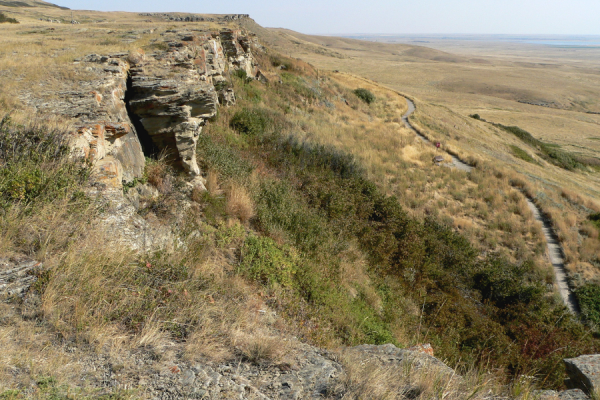In Alberta’s Lower Athabasca Basin: Archaeology and Palaeoenvironments, volume editor Brian Ronaghan, discusses the impact that oil sands development has on a crucial part of our environment: archaeological resources. Oil sands development decimates the archaeological record of a region, wiping out all the details of the story of a landscape.
 In an attempt to avoid losing important information contained within the oil sands region, a cumulative effects analysis is undertaken before development occurs. This analysis helps governing bodies determine whether certain projects are in the public interest. In Alberta, this is a legal process formally called Environmental Impact Assessment (EIA). An EIA is a collection of individual cumulative effects assessments. These assessments identify regional archaeological resources and the past, present, and possible effects of development on these resources. Consequences of the development are evaluated and plans for management of developmental effects are created.
In an attempt to avoid losing important information contained within the oil sands region, a cumulative effects analysis is undertaken before development occurs. This analysis helps governing bodies determine whether certain projects are in the public interest. In Alberta, this is a legal process formally called Environmental Impact Assessment (EIA). An EIA is a collection of individual cumulative effects assessments. These assessments identify regional archaeological resources and the past, present, and possible effects of development on these resources. Consequences of the development are evaluated and plans for management of developmental effects are created.
In an area such as Alberta’s Lower Athabasca Basin, where development has been extensive, these assessments provide us with crucial information about the history and the future of this area. It is interesting to note that archaeological investigation of Alberta’s Lower Athabasca Basin may not have occurred without the “mitigative efforts carried out in connection with oil sands development” (Ronaghan, 513).
As a result of these assessments, “close to 3,400 archaeological sites have been recorded in the oil sands area, and numerous major excavations have recovered evidence of intensive prehistoric human use of the region’s resources” (Ronaghan, 6). As Brian Ronaghan says, the volume is “an effort to draw some of this information together, to take stock of the current state of our knowledge, to offer some provisional interpretations of the evidence, and to discuss some of the issues that complicate our efforts to develop a more comprehensive picture of prehistoric lifeways in the Lower Athabasca region” (Ronaghan, 20).
Why should you read Alberta’s Lower Athabasca Basin: Archaeology and Palaeoenvironments? The unexpected by-product of the development of the oil sands is this rich archaeological record. However, it’s not difficult to imagine how this record has been dramatically altered by industry. Ronaghan puts it best: “It is my hope that the chapters in this book will contribute to a deeper and more nuanced public understanding of the history embedded in this landscape and, in so doing, will help to build interest in the rich prehistoric heritage of northern Canada.”


